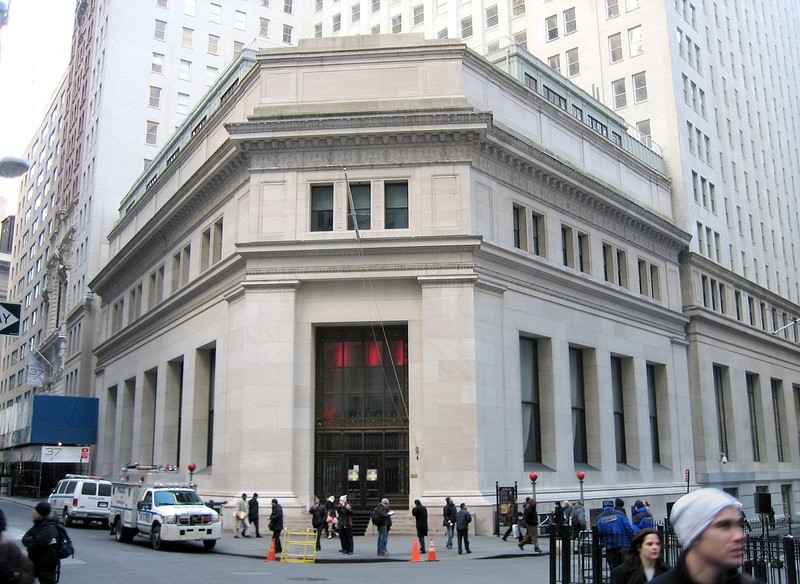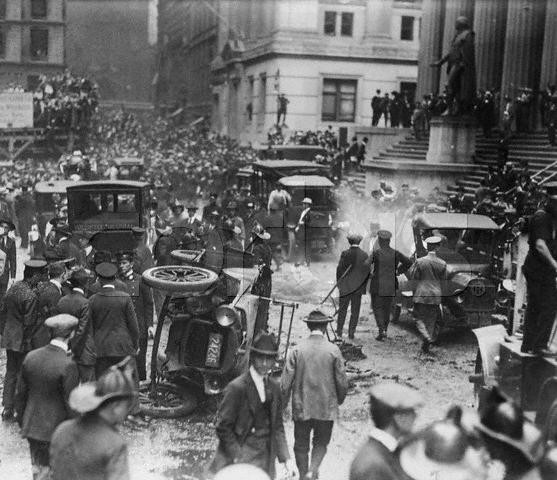23 Wall Street, Former Headquarters of J. P. Morgan
Introduction
Text-to-speech Audio
Images
The building was so well known as the headquarters of J.P. Morgan & Co. – the "House of Morgan" – that it was deemed unnecessary to mark the exterior with the Morgan name.

On September 16, 1920, a person or persons unknown exploded a bomb in front of 23 Wall Street, then as now the offices of J.P. Morgan Inc., causing 400 injuries, some of them horrific, and 38 deaths.

Damage sustained during the Wall Street Bombing on September 16, 1920 is still visible to this day. (c.2006)

Backstory and Context
Text-to-speech Audio
Known simply as 23 Wall Street, the buildings on the corner of Wall and Broad Street have represented the epicenter of American capitalism for over a century. The headquarters of J.P. Morgan and Co., originally Drexel, Morgan & Co., have been located here since its founding in 1873. Finished in 1914, the four-story bank still stands today, although scarred by small pockmarks from the infamous anarchist’s bomb attack that killed 38 people in 1920, remembered as the Wall Street bombing.
On September 16, 1920, one hundred pounds of dynamite were hidden in a horse-drawn carriage stopped just across the street from the headquarters of the J.P. Morgan bank. The dynamite caused a massive explosion that literally rocked Wall Street for blocks in all directions.
Thirty-eight people were killed, and more than four hundred were injured. In the aftermath of the attack, no one claimed responsibility, and despite an investigation spanning three years, the perpetrators were never found. It is now believed that the Galleanists, a group of Italian anarchists, led by Mario Buda, an associate of famous anarchists Sacco and Vanzetti were responsible. Until September 11, 2001, the Wall Street bombing was the deadliest terrorist attack in the history of New York City. J. P. Morgan decided not to repair the damage, leaving it as a symbolic gesture of strength overcoming destruction.
Sources
Gross, Daniel. "Previous Terror on Wall Street -- A Look at a 1920 Bombing." TheStreet. September 16, 2011. Accessed April 01, 2017. http://www.thestreet.com/story/10001305/1/previous-terror-on-wall-street--a-look-at-a-1920-bombing.h....
http://www.skyscraper.org/webwalk/printable/WallStreetTour.pdf
